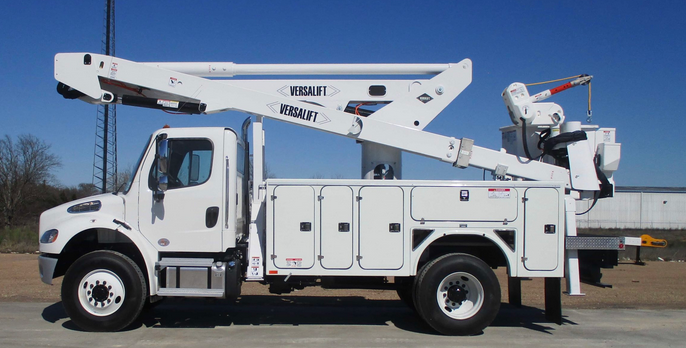Bucket Truck Vs. Crane: Understanding the Key Differences
While bucket trucks and cranes are both used for height-related tasks, they serve distinct purposes and have different capabilities. Here’s a breakdown of the key differences:
1. Primary Function:
• Bucket Trucks are designed to lift people, allowing them to work at heights safely. They are commonly used for utility work, tree trimming, and light installation.
• Cranes are intended for lifting heavy materials and equipment. They are essential in construction sites for moving large items like steel beams, concrete blocks, or machinery.
2. Design and Structure:
• Bucket Trucks have a bucket or aerial platform attached to a hydraulic lifting system, often mounted on a standard truck chassis.
• Cranes typically feature a telescopic or fixed boom, with a hook or other lifting tool, and are built on various types of platforms, from mobile truck-mounted cranes to towering stationary cranes.
3. Maneuverability:
• Bucket Trucks are generally more maneuverable in urban settings or confined spaces.
• Cranes, especially the larger models, require more space to operate and may not be as easy to maneuver in tight areas.
4. Load Capacity:
• Bucket Trucks have a limited load capacity, focusing more on lifting one or two workers with their tools.
• Cranes can lift significantly heavier loads, with capacities ranging from a few tons to hundreds of tons.
5. Height Reach:
• Bucket Trucks offer sufficient height for many tasks but are typically outreached by cranes in terms of maximum height and reach capabilities.
Understanding these differences is crucial in choosing the right equipment for your specific needs.
Whether you’re operating bucket trucks or cranes, keeping your equipment in top condition is essential. Apex Utility Parts offers a wide range of parts and accessories for both bucket trucks and cranes. Our quality products ensure your equipment remains safe and efficient for any task. Visit www.ApexUtilityParts.com for all your heavy machinery part needs, where durability and reliability are our top priorities.

